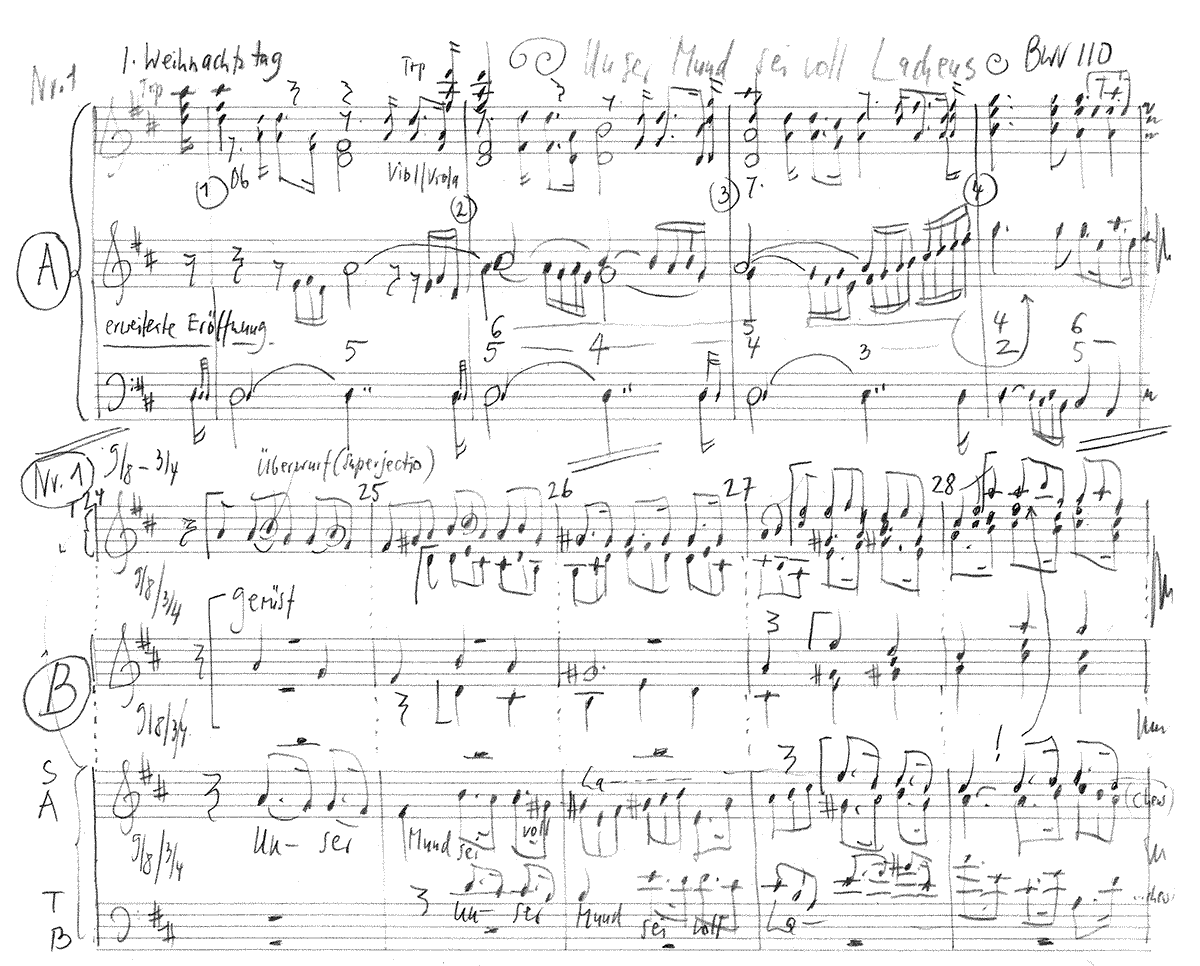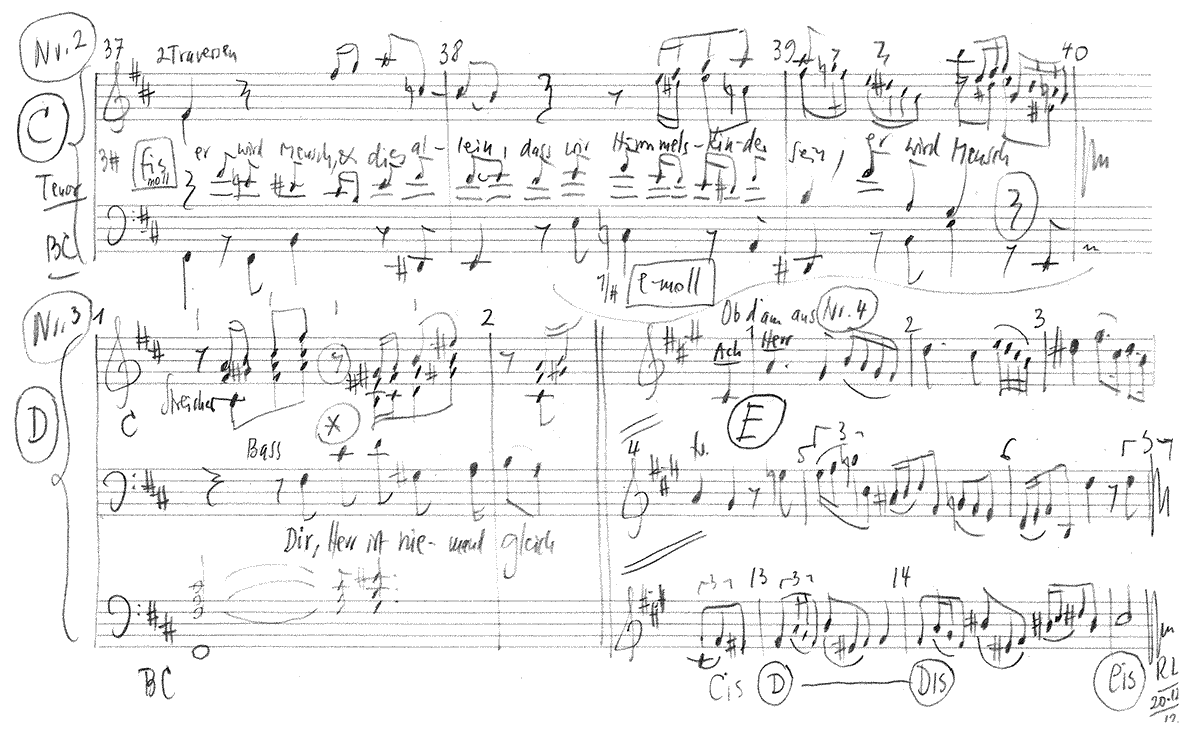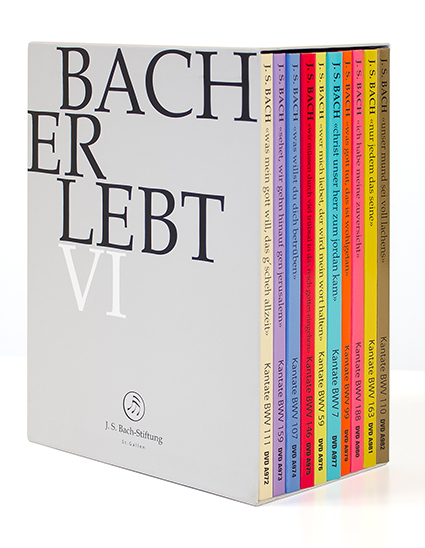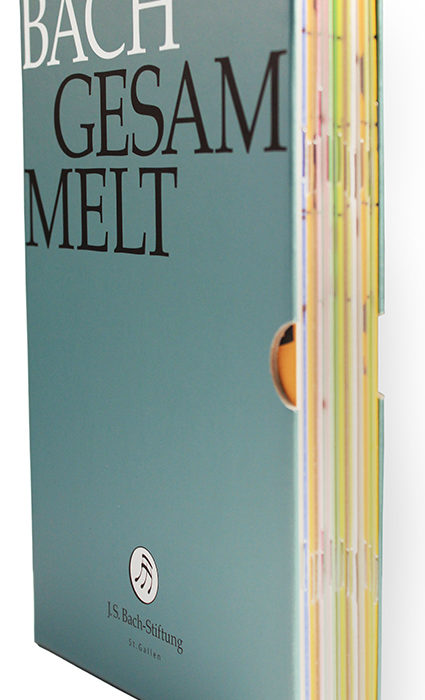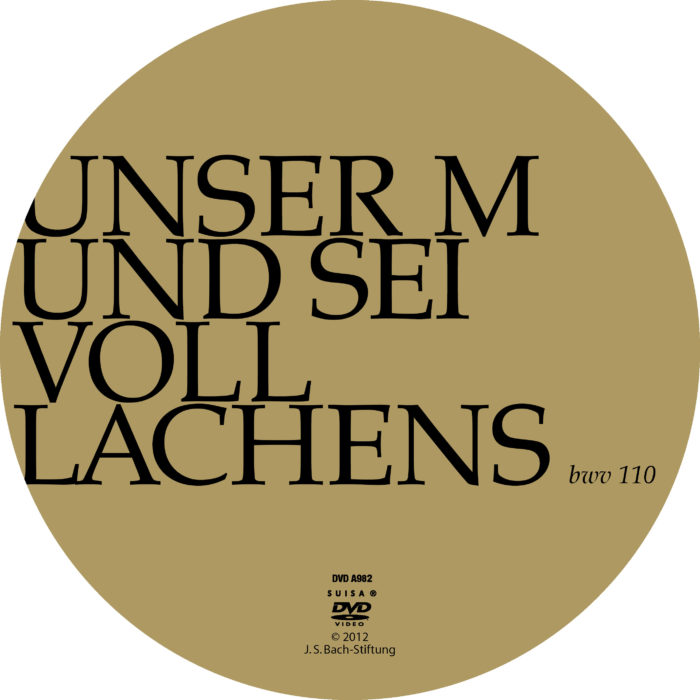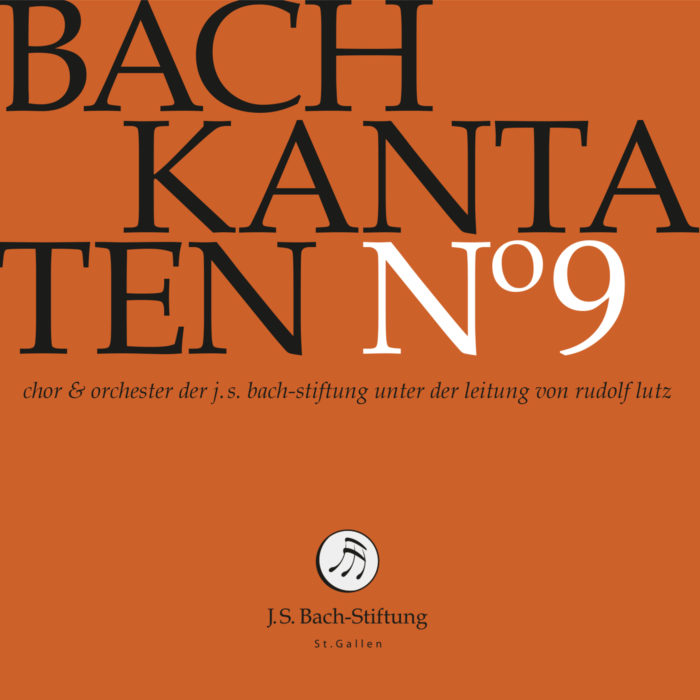Unser Mund sei voll Lachens
BWV 110 // For Christmas Day
(Make our mouth full with laughter) for soprano, alto, tenor and bass, vocal ensemble, trumpet I–III, timpani, transverse flute I+II, oboe I+II+III (oboe d‘amore, oboe da caccia), bassoon and strings
Composed for Christmas Day in 1725 to an unconventional libretto by Georg Christian Lehms, cantata BWV 110 explores three bible verses in three successive arias before closing with a congegrational chorale.
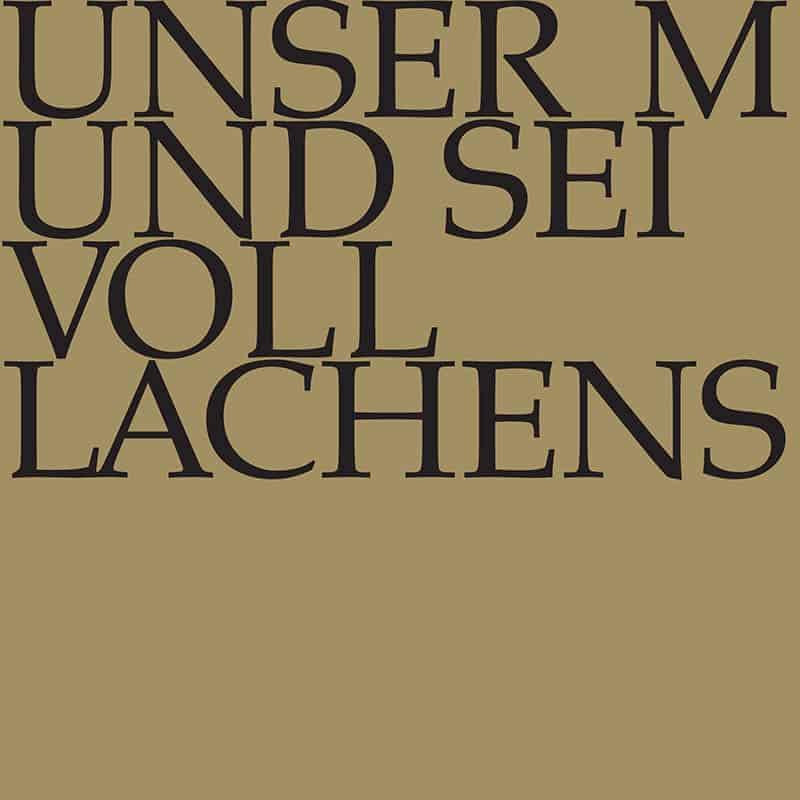
Would you like to enjoy our videos ad-free? Subscribe to YouTube Premium now...
Workshop
Reflective lecture
Choir
Soprano
Mirjam Berli, Olivia Fündeling, Jennifer Rudin, Susanne Seitter, Alexa Vogel
Alto
Jan Börner, Antonia Frey, Francisca Näf, Simon Savoy, Lea Scherer
Tenor
Clemens Flämig, Jonathan Spicher, Nicolas Savoy, Walter Siegel
Bass
Fabrice Hayoz, Valentin Parli, Philippe Rayot, Oliver Rudin
Orchestra
Conductor
Rudolf Lutz
Violin
Renate Steinmann, Dorothee Mühleisen, Monika Altdorfer, Christine Baumann, Elisabeth Kohler, Martin Korrodi, Marita Seeger, Salome Zimmermann
Viola
Susanna Hefti, Martina Bischof, Olivia Schenkel
Violoncello
Martin Zeller, Hristo Kouzmanov
Violone
Iris Finkbeiner
Oboe
Ingo Müller, Thomas Meraner, Dominik Melicharek
Oboe d’amore
Ingo Müller
Bassoon
Susann Landert
Tromba da tirarsi
Patrick Henrichs, Peter Hasel, Klaus Pfeiffer
Transverse flute
Claire Genewein, Renate Sudhaus
Timpani
Martin Homann
Organ
Nicola Cumer
Musical director & conductor
Rudolf Lutz
Workshop
Participants
Karl Graf, Rudolf Lutz
Reflective lecture
Speaker
Joachim Rittmeyer
Recording & editing
Recording date
12/21/2012
Recording location
Trogen
Sound engineer
Stefan Ritzenthaler
Director
Meinrad Keel
Production manager
Johannes Widmer
Production
GALLUS MEDIA AG, Switzerland
Producer
J.S. Bach Foundation of St. Gallen, Switzerland
Librettist
Text No. 1, 2, 4, 6
Georg Christian Lehms (1684–1717)
Text No. 3, 5
Bible quotes
Text No. 7
Kaspar Füger (1521–1592)
First performance
First Day of Christmas,
25 December 1725
In-depth analysis
As befits a work commemorating a feast day, Bach pulls out all the stops in the introductory chorus, which is set to a modified verse from psalm 126. For this movement, Bach adapts an earlier overture for strings, three oboes, basoon and continuo (most probably from his Cöthen era), augmenting it with trumpets, timpani and transverse flutes to compose a score of stirring, festive joy that virtually explodes in a Handelesque burst of fireworks over the opening pedal point. By adding a choral insertion to the concertante fugue, Bach creates a middle section replete with solo passages and ripieno vocal parts that lend the movement extraordinary impact and diversity.
Following this majestic opening is a gentle tenor aria centring on inner reflection of the “thoughts and senses”. Here, the Christmas connection that some commentators find lacking in the text is provided for by the flutes, which, together with the bassoon continuo, lend the timbre a pastoral quality. Ascending gestures are prevalent throughout the movement, with the repetition of the word “we” accentuating humankind’s designation as “heaven’s children” to great effect. In the expressive bass recitative that ensues, the accompanying strings could even be mistaken for the beating of angels’ wings. The sudden transition to the F minor world of the following alto aria, however, draws attention to the cantata’s true import: namely, the chasm between godly majesty and human baseness, and the wonder in the resolution – albeit undeserved – of this schism through the birth of Jesus Christ. Here, the addition of an oboe d’amore to the stolid, selfaccusing alto lines provides at once a soulful tone and a symbolic gesture. God, through his love, ennobled the nature of humankind, making for a richer and warmer world. This theme is continued in the following duet, whose magnificent text of “Glory to God in the highest” could have given vent to a massive choral setting. Bach, however, scores the text simply, with a smooth continuo line evoking a moment of inner rejoicing and still rapture. We can only wonder whether the Leipzig audience of the day recognised the passage from Bach’s Weihnachtsmagnificat of 1723 that forms the basis of this movement. By transforming the Magnificat’s “Virga Jesse floruit” to a “Glory to God in the highest”, Bach provides a musical resolution to the promise of the Old Testament that is generally considered to prophesy the coming of Christ. Following this passage, unbridled joy breaks forth: the bass aria takes on the triadic figures of the duet, passing them to the trumpets that invoke Chrtismas rejoicing with robust fanfare: “Wake up, ye nerves and all ye members”. Appropriately, all voices move in ascending lines, even leaps. But the composer adheres to a strict interpretation of the text: when the “strings of deep devotion” are mentioned, the otherwise brilliant trumpet calls are notably absent.
The closing chorale, set to the archaic melody of the hymn “Wir Christenleut”, brings the work to a surprisingly ernest conclusion. The short phrases of the text give the movement considerable weight, and it is evident that – despite being in his third year of office in Leipzig – Bach had yet to tire of impressing his audience and still aspired to the highest challenges.
Libretto
1. Chor
Unser Mund sei voll Lachens und unsre
Zunge voll Rühmens. Denn der Herr hat
Grosses an uns getan.
2. Arie (Tenor)
Ihr Gedanken und ihr Sinnen,
schwinget euch anitzt von hinnen,
steiget schleunig himmelan
und bedenkt, was Gott getan!
Er wird Mensch, und dies allein,
dass wir Himmels Kinder sein.
3. Rezitativ (Bass)
Dir, Herr, ist niemand gleich.
Du bist gross und dein Name ist gross
und kannsts mit der Tat beweisen.
4. Arie (Alt)
Ach Herr, was ist ein Menschenkind,
dass du sein Heil so schmerzlich suchest?
Ein Wurm, den du verfluchest,
wenn Höll und Satan um ihn sind;
doch auch dein Sohn, den Seel und Geist
aus Liebe seinen Erben heisst.
5. Arie (Duett Sopran, Tenor)
Ehre sei Gott in der Höhe und Friede auf
Erden und den Menschen ein Wohlgefallen!
6. Arie (Bass)
Wacht auf, ihr Adern und ihr Glieder,
und singt dergleichen Freudenlieder,
die unserm Gott gefällig sein.
Und ihr, ihr andachtsvollen Saiten,
sollt ihm ein solches Lob bereiten,
dabei sich Herz und Geist erfreun.
7. Choral
Alleluja! Alleluja! Gelobt sei Gott,
singen wir all aus unsers Herzens Grunde.
Denn Gott hat heut gemacht solch Freud,
die wir vergessen solln zu keiner Stunde.



